Abstract
Structural and metabolic features of the seedcoats of the developing pea seed indicate that events in the cells of the seedcoats are of major importance in controlling the development of the embryo. Information has been obtained on the distribution of N and P constituents of the seedcoats, embryo sac liquid, and the cotyledons of the embryo, in relation to the changes in the activities of several enzymes: aminopeptidases, β-glucosidase, and acid phosphatase. The liquid contents of the embryo sac are considered to arise as a secretion from the tegmen. High concentrations of amino acids (about 0.3 molar), NH4+ (about 0.1 molar), and orthophosphate (Pi) (up to 4 millimolar) were measured in this fluid. Since Pi was the only form of P present, the data confirm the possible function of some of the seedcoat acid phosphatase activity in the provision of Pi to the embryo.
Full text
PDF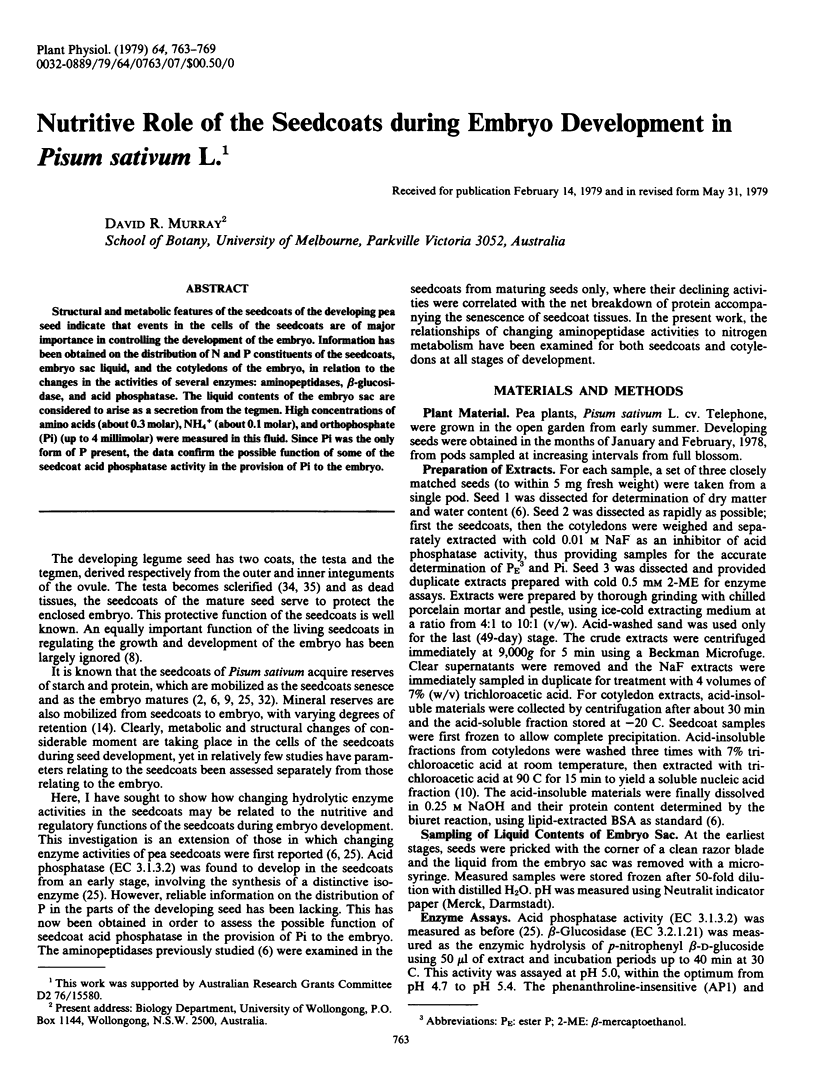
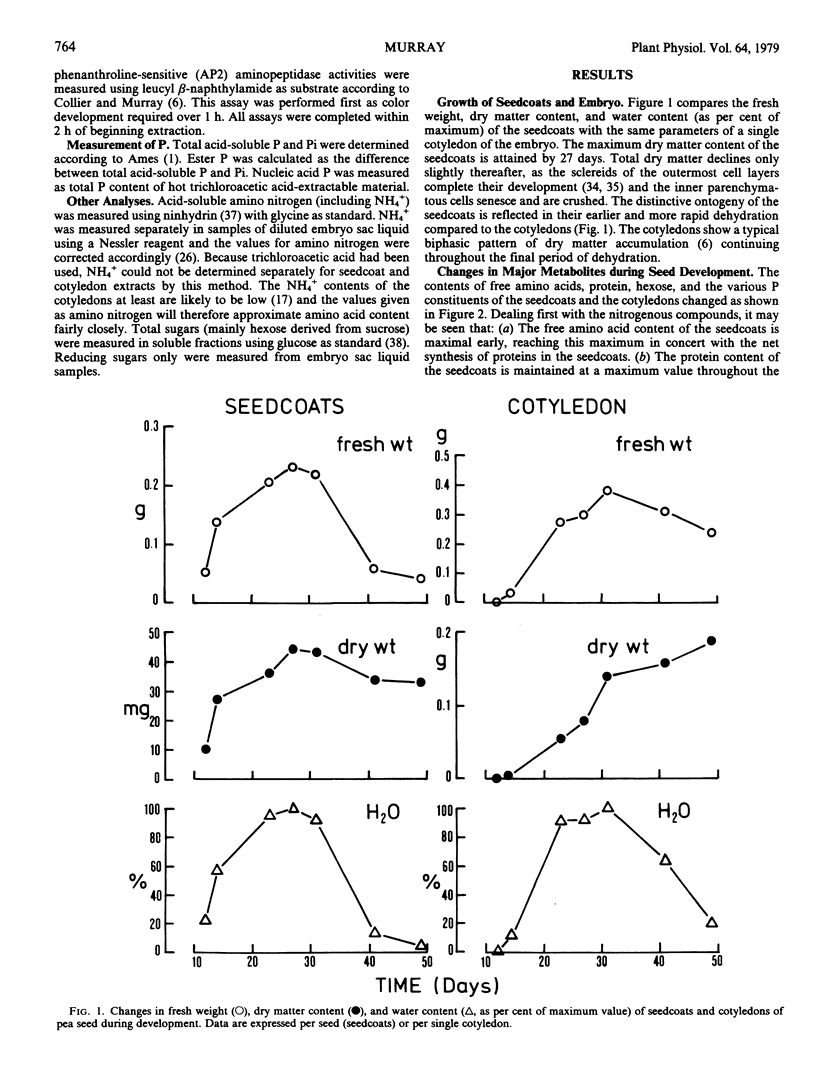
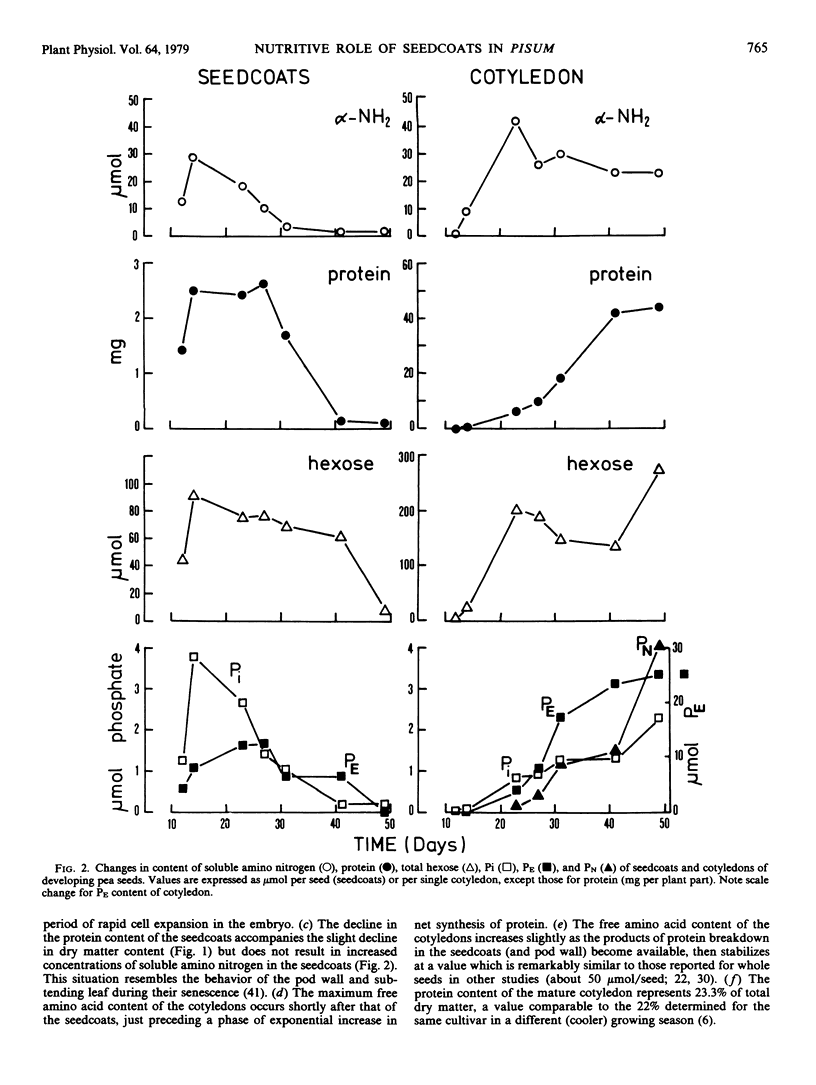
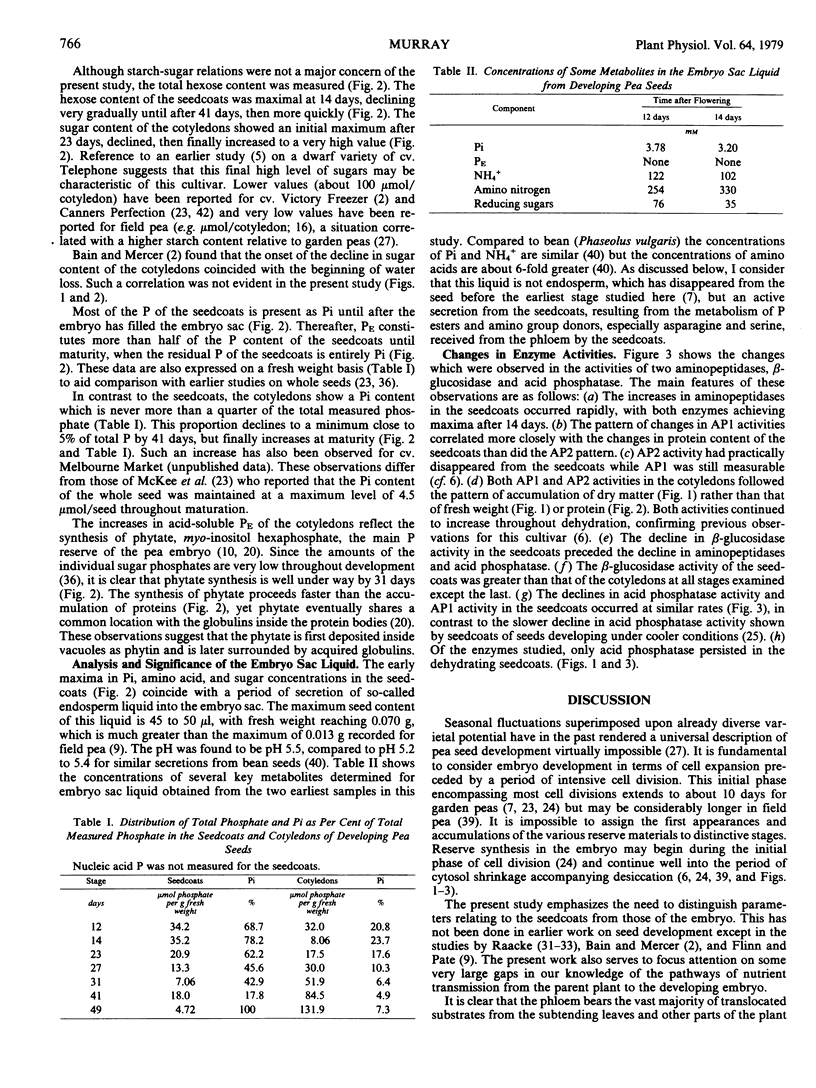
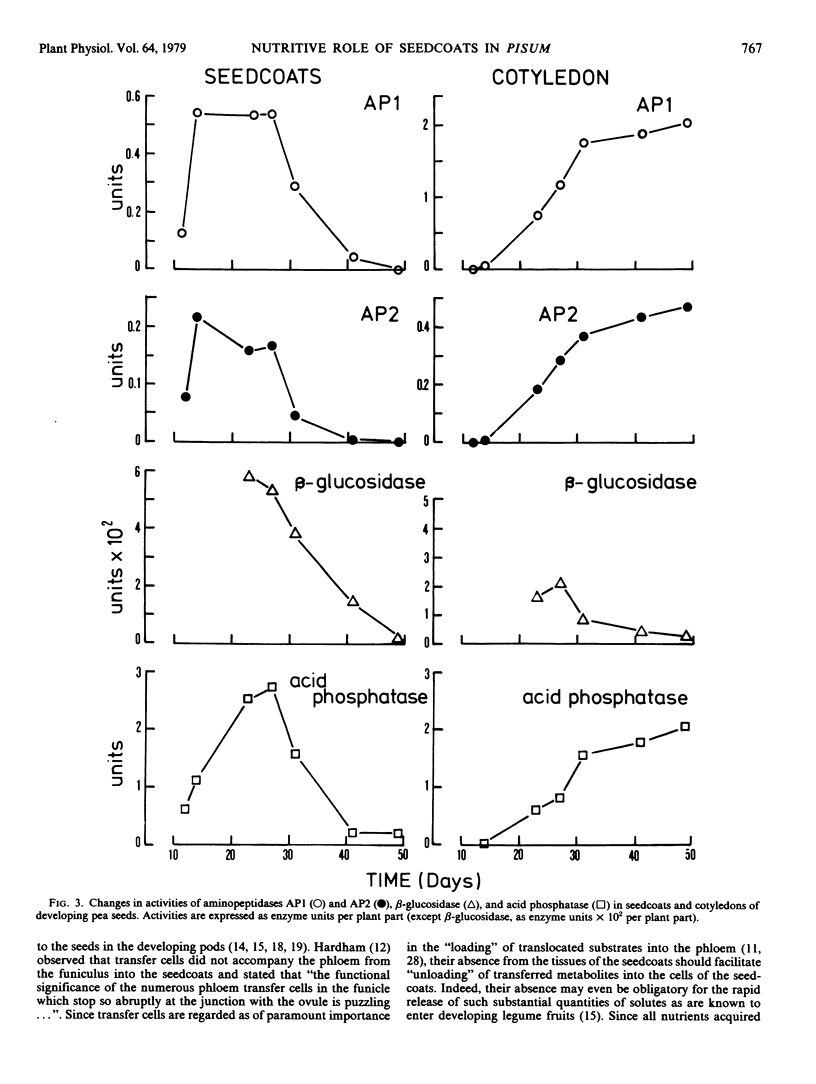
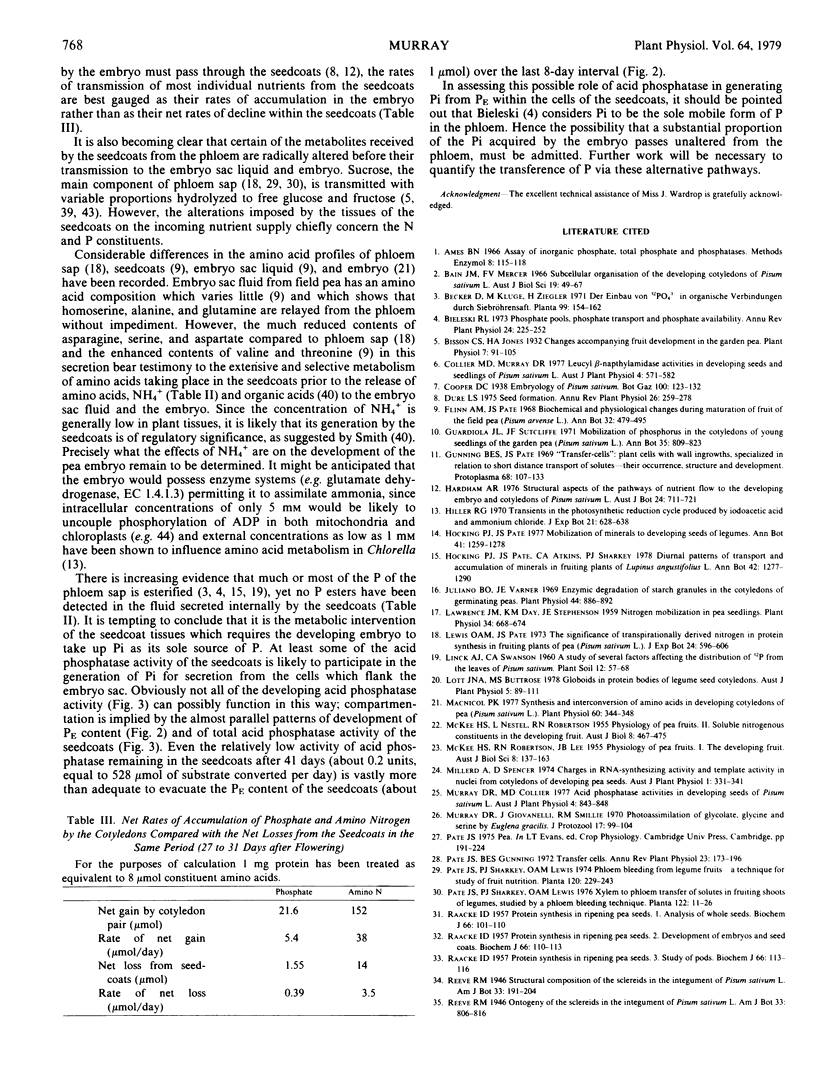

Selected References
These references are in PubMed. This may not be the complete list of references from this article.
- Bisson C. S., Jones H. A. CHANGES ACCOMPANYING FRUIT DEVELOPMENT IN THE GARDEN PEA. Plant Physiol. 1932 Jan;7(1):91–105. doi: 10.1104/pp.7.1.91. [DOI] [PMC free article] [PubMed] [Google Scholar]
- Juliano B. O., Varner J. E. Enzymic degradiation of starch granules in the cotyledons of germinating peas. Plant Physiol. 1969 Jun;44(6):886–892. doi: 10.1104/pp.44.6.886. [DOI] [PMC free article] [PubMed] [Google Scholar]
- Lawrence J. M., Day K. M., Stephenson J. E. Nitrogen Mobilization in Pea Seedlings. Plant Physiol. 1959 Nov;34(6):668–674. doi: 10.1104/pp.34.6.668. [DOI] [PMC free article] [PubMed] [Google Scholar]
- Macnicol P. K. Synthesis and Interconversion of Amino Acids in Developing Cotyledons of Pea (Pisum sativum L.). Plant Physiol. 1977 Sep;60(3):344–348. doi: 10.1104/pp.60.3.344. [DOI] [PMC free article] [PubMed] [Google Scholar]
- RAACKE I. D. Protein synthesis in ripening pea seeds. I. Analysis of whole seeds. Biochem J. 1957 May;66(1):101–110. doi: 10.1042/bj0660101. [DOI] [PMC free article] [PubMed] [Google Scholar]
- RAACKE I. D. Protein synthesis in ripening pea seeds. II. Development of embryos and seed coats. Biochem J. 1957 May;66(1):110–113. doi: 10.1042/bj0660110. [DOI] [PMC free article] [PubMed] [Google Scholar]
- RAACKE I. D. Protein synthesis in ripening pea seeds. III. Study of the pods. Biochem J. 1957 May;66(1):113–116. doi: 10.1042/bj0660113. [DOI] [PMC free article] [PubMed] [Google Scholar]
- Wara-Aswapati O., Bradbeer J. W. Chloramphenicol as an energy transfer inhibitor in spinach chloroplasts. Plant Physiol. 1974 May;53(5):691–693. doi: 10.1104/pp.53.5.691. [DOI] [PMC free article] [PubMed] [Google Scholar]
- Young L. L., Dolan C. T., Sheridan P. J., Reeve C. M. Oral manifestations of histoplasmosis. Oral Surg Oral Med Oral Pathol. 1972 Feb;33(2):191–204. doi: 10.1016/0030-4220(72)90389-1. [DOI] [PubMed] [Google Scholar]


